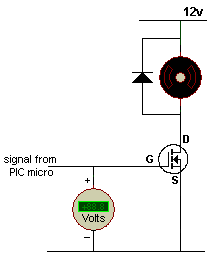

In a MOSFET the effective doping level is modified by the biasing. The resistance of the channel in a FET depends upon the doping and the physical dimensions of the material. Here it is broken and is broken because it is not a continuous channel. When you look at the schematic symbol for an e-mode MOSFET you'll notice that usually, you'd have a continuous line here as we did with FETs and the depletion-mode. A broken line in the schematic symbol indicates that there is no continuous path from source to drain. We're going to need a gate voltage to get current flow and we will address that in a few slides from now. Remember, this is enhancement-mode, this is a major difference right here.Ī proper polarity gate voltage must be applied for current flow.

There is no continuous channel between the source and the drain like we had with JFETs and with the depletion-mode. The area between the source and the drain is lightly doped p-type material. They're connected to heavily doped n-type material. The metal gate of the MOSFET is insulated from the substrate by a layer of silicon dioxide.Įnhancement-mode MOSFETS, the source, and drain terminals connect to heavily doped n-type silicon in an n-channel enhancement-mode MOSFET. With a voltage applied, current can easily flow between the terminals. Again, the same thing except that materials have been reversed.ĭepletion-Mode MOSFET, in a depletion-mode MOSFET, there is a continuous channel or n-type material between the source and drain terminals. The line with the arrow also indicates a connection between the source and the drain right here.

This is the same as N except for reversal of the material. Our main concern is going to be with the three connections. However, there is an option for a fourth connection and that would be over here. We have a gate, a drain and a source and is usually connected as three. Here we have the actual schematic symbol. These three layers led to the device name. The three layers led to the device name hence we have Metallic, metallic, oxide, oxide, semiconductors, semiconductors. There is no connection between the gate and the source and drain. What that's going to do is there's no electrical connection between the gate and the n-type material because we have an insulator in between them, but we will be able to induce an electronic field through the material. The aluminum is insulated from the channel by a piece of silicon dioxide. This is where we differ greatly from a FET is we have actually a metal here. The gate is connected to aluminum which is insulated from the channel by a thin layer of silicone dioxide. A more positive voltage would cause the channel to reduce and resistance and conduct lots of current.

We put a negative voltage here, it will tend to increase the resistance of the n-type channel and that would reduce current. This is very similar to what we saw in a JFET. We put a voltage in between the source and drain, we would have current flow. A voltage placed across the source and drain would induce current flow. You'll notice here is the source, here is the drain, and we have a continuous channel of n-type material. Note, continuous channel of n-type material between the source and the drain. The first one we'll look at is the depletion mode MOSFET. MOS Field-Effect Transistors: Depletion Mode Depletion mode comes in an N or a P and an enhancement mode comes in an N or a P. Each class is available as n- or a p-channel, giving a total of four types of MOSFETs. There is depletion mode and there is enhancement mode. Isn't that a mouthful? A MOSFET is fabricated differently and operates differently than a JFET but it does have some similarities. MOSFET is an acronym for Metallic-Oxide-Semiconductor Field Effect Transistor. In Section 10-3 and we're looking at MOSFETs.


 0 kommentar(er)
0 kommentar(er)
